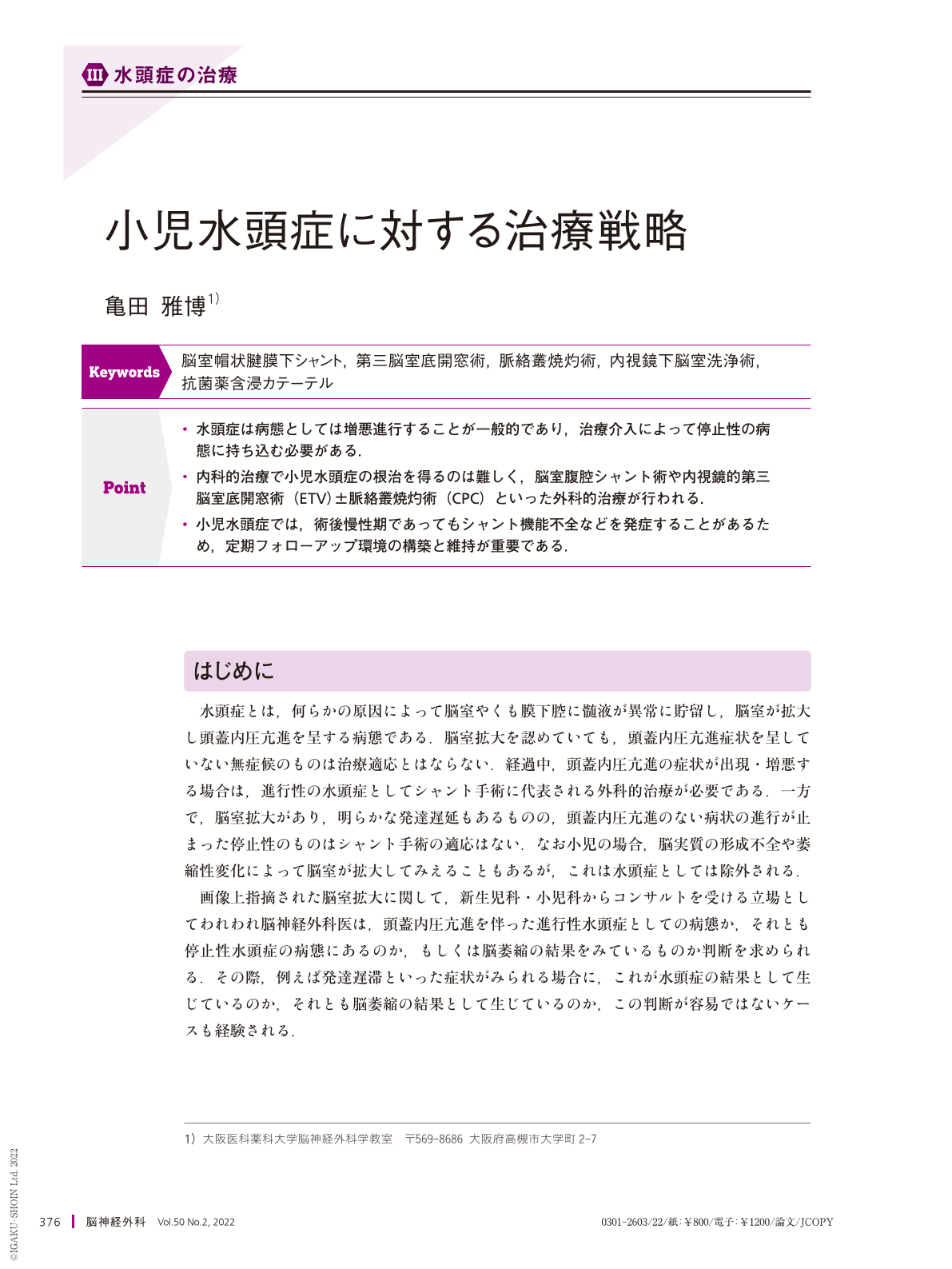Japanese
English
- 有料閲覧
- Abstract 文献概要
- 1ページ目 Look Inside
- 参考文献 Reference
Point
・水頭症は病態としては増悪進行することが一般的であり,治療介入によって停止性の病態に持ち込む必要がある.
・内科的治療で小児水頭症の根治を得るのは難しく,脳室腹腔シャント術や内視鏡的第三脳室底開窓術(ETV)±脈絡叢焼灼術(CPC)といった外科的治療が行われる.
・小児水頭症では,術後慢性期であってもシャント機能不全などを発症することがあるため,定期フォローアップ環境の構築と維持が重要である.
Since hydrocephalus is usually an exacerbating disease, we need to arrest the hydrocephalus by surgical treatments such as ventricular access devices, V-P shunts, and endoscopic third ventriculostomy(ETV)with or without choroid plexus cauterization.
For a long time, V-P shunt has been the GOLD standard treatment for pediatric hydrocephalus. In recent years, although there are more and more reports on the usefulness of ETV ± CPC, its results are not completely superior to V-P shunt, and therefore, V-P shunt is expected to remain the gold standard treatment for pediatric hydrocephalus in the near future.
Therefore, overcoming complications, such as shunt dysfunction and shunt infection, will continue to be important in V-P shunt.
A recent clinical trial has shown that antibiotic-impregnated catheters are effective in preventing shunt infections, which is why the incidence of shunt infection is expected to decrease in the future.
For pediatric hydrocephalus, it is important to establish and maintain a regular follow-up system, because shunt malfunction may occur even in the chronic postoperative period.

Copyright © 2022, Igaku-Shoin Ltd. All rights reserved.


